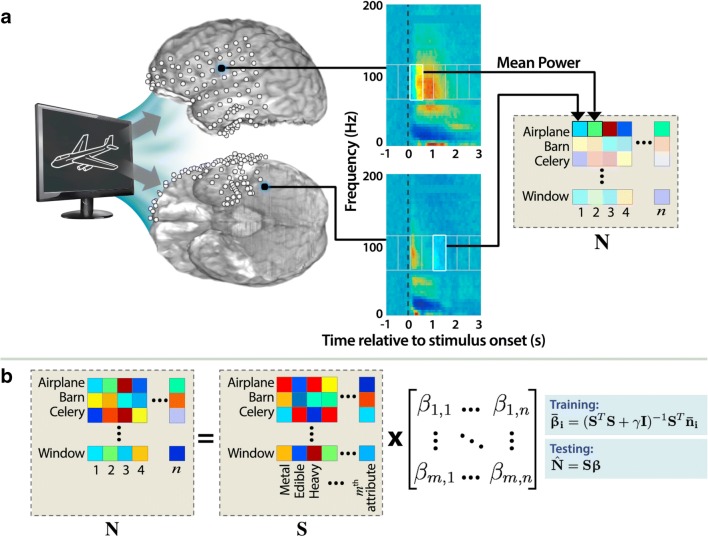Fig. 3.
Semantic feature-encoding model used by Rupp et al. [21]. (a) Mean spectral power (numbered 1 to n) during particular temporal windows in specific frequency bands in specific channels collected while a subject views and names images from each semantic category can be concatenated into a neural feature vector (N) for each semantic category [21]. (b) Reverse-decoding scheme, in which expected neural activity is predicted from a semantic feature-encoding model [21]. Semantic attributes (numbered 1 to m) corresponding to each semantic category can be concatenated into a semantic feature vector (S), which can be used in a neural encoding model (β), in this case through linear ridge regression, to predict N from S [21]. In this reverse-decoding process, which can often be more effective, new neural activity patterns are compared to the characteristic “template” patterns generated by β and assigned to the closest category [21]. Note, however, that it would also be valid to predict semantic features from neural activity and compare them to the characteristic semantic feature vectors instead. Figure reused with permission from Ref. [21]

